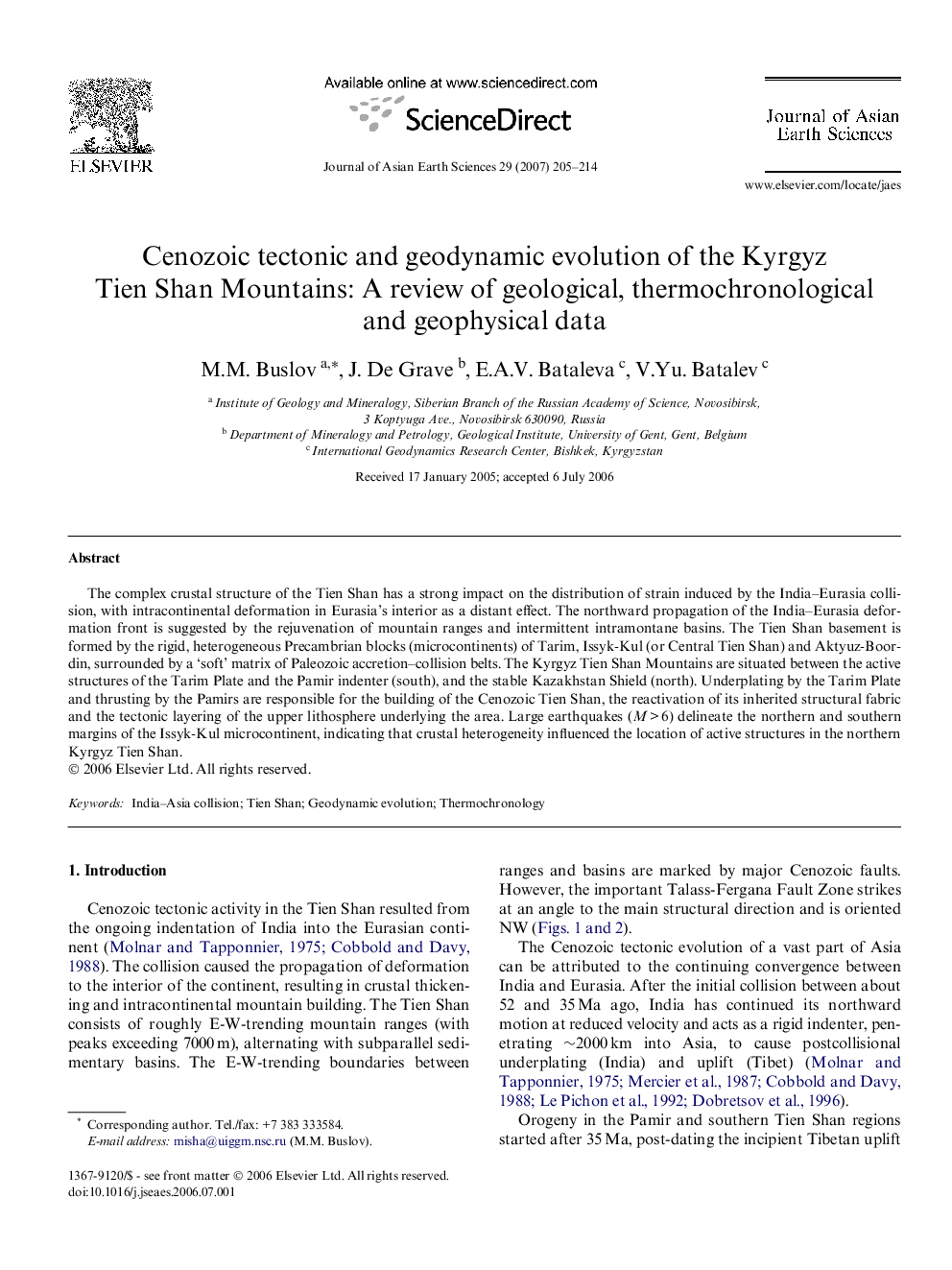| Article ID | Journal | Published Year | Pages | File Type |
|---|---|---|---|---|
| 4732803 | Journal of Asian Earth Sciences | 2007 | 10 Pages |
The complex crustal structure of the Tien Shan has a strong impact on the distribution of strain induced by the India–Eurasia collision, with intracontinental deformation in Eurasia’s interior as a distant effect. The northward propagation of the India–Eurasia deformation front is suggested by the rejuvenation of mountain ranges and intermittent intramontane basins. The Tien Shan basement is formed by the rigid, heterogeneous Precambrian blocks (microcontinents) of Tarim, Issyk-Kul (or Central Tien Shan) and Aktyuz-Boordin, surrounded by a ‘soft’ matrix of Paleozoic accretion–collision belts. The Kyrgyz Tien Shan Mountains are situated between the active structures of the Tarim Plate and the Pamir indenter (south), and the stable Kazakhstan Shield (north). Underplating by the Tarim Plate and thrusting by the Pamirs are responsible for the building of the Cenozoic Tien Shan, the reactivation of its inherited structural fabric and the tectonic layering of the upper lithosphere underlying the area. Large earthquakes (M > 6) delineate the northern and southern margins of the Issyk-Kul microcontinent, indicating that crustal heterogeneity influenced the location of active structures in the northern Kyrgyz Tien Shan.
